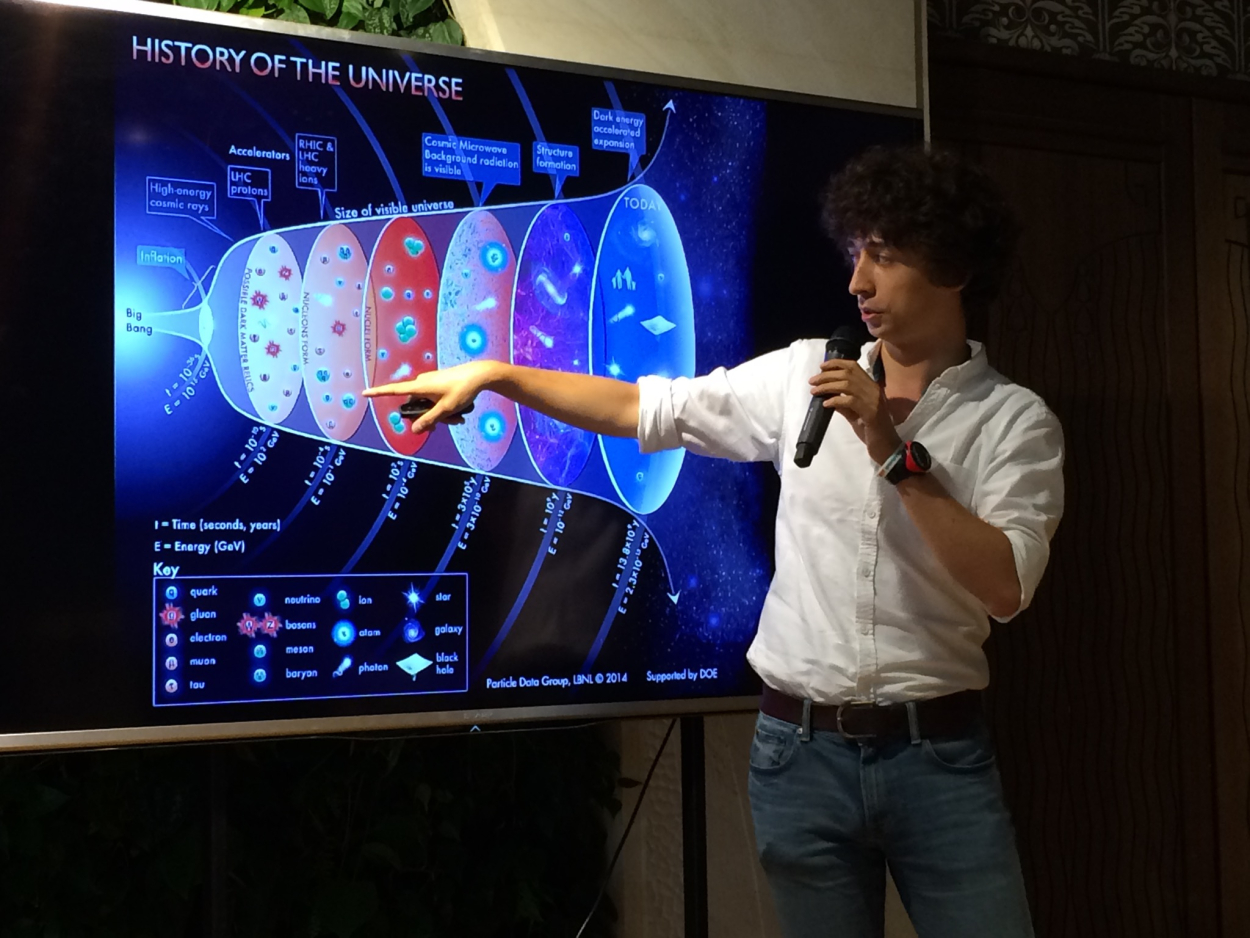LHC: What you should not read

Where to find the truth and what fake news stories about the Large Hadron Collider are the most popular? “Einstein’s Language” asks Andrei Seriakov, SPbU’s research fellow at the Laboratory of the Ultra-High Energy Physics, a member of the NA61/SHINE at the CERN, winner of the Science Slam and founder of the “CERNach” in “VKontakte”.
Andrei Seriakov has long been engaged in various popular science projects to tell us about the very Large Hadron Collider (LHC), its projects, and why people need it. Those who come to listen to popular science lectures are not as numerous as those who read about science in mass media. “There are lots of fake news stories about the LHC, especially on the YouTube. The first several dozens of videos are not about science at all”, — said the scientist. LHC is the biggest scientific experiment in the world history. “In the 27-km tunnel, 150 metres below the ground we, scientists, accelerate the protons and nuclei of lead atoms about at near light speed. The protons race around the LHC accelerator ring 11,000 times a second, — said Andrei Seriakov. — To the clockwise circuit and anticlockwise, and we collide them inside detectors”.
The LHC is the hottest and the coldest place on the Earth. The scientists reported that the LHC reached the highest man-made temperature record — +55 000 000 000 000 °C. At the same time, the LHC is the coolest place in the Universe. The coldest temperature in the Antarctic is −95 °C, while in the outer space −270,5 °C (temperature of the cosmic microwave background). “The LHC can cool superconducting magnet to −271,3 °C, which is tow degrees higher absolute zero”, — said Andrei Seriakov.
These facts, unfortunately, are not discussed in mass media. “We encounter lots of news stories related to the LHC, but they are of little scientific background, if any. For example, the CERN has 666 as its logo. The matter is the logo is a scheme of the orbit accelerator, which is the LHC”, — said the scientist. A more recent fake news story is a photo with the caption “ Bizarre clouds over Large Hadron Collider prove portals are opening”. “The photo is shared by three thousand internet users. It is a lot. The photo actually depicts clouds over Geneva”, — said the scientists.
A number of fake stories about the LHC are related to the mystical rituals that are thought to be held at the LHC. It is illustrated by a photo of Shiva. The statue of Shiva near the LHC is a present from India as a sign of long-standing collaboration.
“Another type of the fake news, that has some scientific background, is some say the LHC will destroy our planet. It will generate the black hole which will suck everything. The scientists are looking for them, but we have no results yet, — said Andrei Seriakov. — Others say that we will be transformed into another vacuum state. The idea is that vacuum will be replaced by other vacuum, and we all will collapsed and our elementary particle will have other properties. In fact, it is a complicated theory, far from being well understood by the scientists themselves. Although mass media and social networks cover it as well”.
All the hypotheses that the LHC can destroy something can be rejected by one fact. A large number of particles fly at high speeds from other galaxies. These particles “collide” with our atmosphere. “They collide at such high energies that are not possible to generate at the laboratories. Such collisions are not a rare occurrence. If there was a chance of a risk emerging, it would emerge”, — said Andrei Seriakov.
If you don’t want to be a victim of the fake news, you are advised to check the following: first, references to the scientific articles. “if you have found one, you have proved information», — said the scientist. Second, reference to the official press releases of the research institutions. All information related to the LHC are published on the CERN’s web-site. “No sources, no news. If you are interested in gaining true information, find scientific articles. If you work as a journalist and don’t have a lightest idea what it is about, ask the authors of the articles”, — said Andrei Seriakov. The scientists will explain everything.
For reference:
“Einstein’s Language” is a new project of the Information Centre for Nuclear Energy in St Petersburg with a specific focus on meeting with the scientists to discuss current scientific news.

